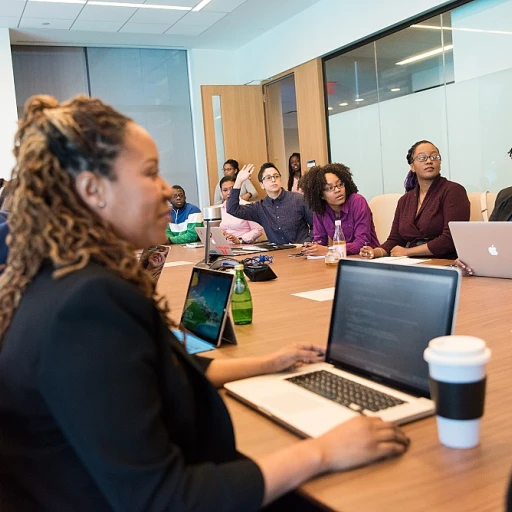
Defining a Workplace Skills Plan
Clarifying the Essence of a Skills Plan
A Workplace Skills Plan (WSP) is a strategic tool designed to equip organizations with the necessary framework to enhance their workforce capabilities. By mapping out skills development initiatives, it aligns employee training with the overarching business objectives. This alignment ensures that the workforce is well-prepared to meet both current and future demands, catering to the rapidly evolving business landscape. Understanding the importance of a skills plan lies in its ability to identify skill gaps within an organization, thereby enabling the development of specific skills required to close these gaps. With a clear skills plan, businesses can initiate targeted training programs that address these specific deficiencies, ensuring that their workforce remains competitive and adaptable. WSPs not only facilitate compliance with regulatory requirements, especially in regions like South Africa where such plans might be obligatory, but they also provide a foundation for effective skills planning. By fostering forward-thinking and succession planning, organizations can effectively prepare employees for more advanced roles. Consequently, a well-implemented skills plan serves as a bridge between current workforce capabilities and future business needs, ensuring that employees are continuously learning and adapting. For more insights into the benefits of skills planning, you can explore how community-based training programs significantly contribute to these efforts.Identifying Key Skills for Transition
Essential Skills for a Smooth Career Transition
Transitioning in your career can be a daunting task, especially when identifying the key skills you require in your new position within the business landscape. To ensure a seamless transition, organisations must invest time in understanding the specific skill gaps among their workforce and prioritizing skills development initiatives. Various training initiatives and comprehensive planning are crucial in equipping employees with the necessary tools for success. The implementation of a workplace skills plan (WSP) is vital, not only for compliance purposes in South Africa but as part of a forward-thinking approach to workforce planning. This helps in aligning skills development objectives with overall business requirements and strategic initiatives. To effectively identify key skills for transition, organizations should focus on conducting a thorough gap analysis. Here’s a concise guide to assist:- Analysis of Current Skills – Evaluating the existing capabilities within your workforce can highlight areas for improvement.
- Evaluation of Future Needs – Anticipating the specific skills necessary for future roles ensures that employees are prepared for succession planning.
- Implementation of Targeted Training Programs – Offering annual training and development opportunities tailored to fill identified gaps can ease transitions.
Developing a Personalized Skills Plan
Crafting Your Skills Blueprint
Creating a personalized skills plan is an essential part of navigating any career transition. This stage involves aligning your personal goals with the specific skills required in your desired job role or industry. Start by conducting a gap analysis of your current skill set. This will help identify what skills you possess and the areas where development is necessary. Remember, each workplace skills plan should be tailored, reflecting your unique objectives and the demands of your new role. For instance, forward-thinking organisations in South Africa are increasingly prioritizing skills development initiatives to ensure compliance with ever-evolving business landscapes. Consider your plan as a roadmap for achieving career success, consistent with the workforce capabilities needed in today’s market. You’ll need to carefully strategize the training initiatives required, taking into account the skills gaps you must bridge. Leveraging existing resources, such as formal training programs and development initiatives, can enhance your learning journey. Moreover, effective skills planning is not just about identifying what you need to learn. It requires meticulous planning and thorough implementation. Specify the steps necessary to acquire the skills, and set clear timelines to track your progress. By doing so, you safeguard your objectives while ensuring you're on course for seamless professional growth. Lastly, solicit feedback from relevant business mentors or career advisors—individuals who can provide insights based on real-world experience. Their perspectives can be invaluable in refining your skills plan, making it more robust as you aim to fulfill the requirements of your prospective job role or sector. When designing a skills plan wsp, it’s crucial to integrate annual training schedules. This allows for continuous learning and adaptation, keeping your skill set relevant and competitive. In short, develop your personal skills blueprint with an eye on both your current and future career aspirations. For more insight on planning workplace skills strategically, explore this resource on volunteer hours for medical school which can offer additional perspectives on time management and dedication. In summary, developing a personalized skills plan is a pivotal step in a successful career transition, helping you address specific skill gaps and meet workforce requirements. It’s an ongoing process that demands both commitment and adaptability.Leveraging Resources for Skill Development
Maximizing Support for Skill Enhancement
In the journey of enhancing workforce skills within an organization, leveraging available resources plays a crucial role. Organizations that prioritize skill development often provide a variety of training initiatives to support employee growth. These programs not only align with business objectives but also address specific skill gaps identified in the workforce.
To effectively utilize these resources, start by exploring what is already available within your organization. Many companies offer in-house training programs that are part of their annual training plans. These initiatives can range from formal workshops to online learning modules, aimed at honing specific skills necessary for business operations.
Furthermore, various external sources can complement internal programs. Consider industry-specific training courses that align with your role or objectives. Professional development workshops are excellent opportunities to gain insight into new methodologies or tools relevant to your field.
For organizations operating in regions like South Africa, compliance with regulatory requirements is crucial for proper skills planning. The implementation of a Workplace Skills Plan (WSP) ensures that both employees and the organization remain compliant with national standards, fostering a culture of continuous learning and development.
Documenting these initiatives within a structured plan helps in tracking progress and evaluating the effectiveness of training endeavors, ultimately contributing to the efficacy of skills planning.
Overcoming Challenges in Skill Acquisition
Navigating Obstacles in Skill Enhancement
When working on a Workplace Skills Plan (WSP), it's essential to recognize that challenges in skill acquisition are inevitable. Organisations may encounter several hurdles that could hinder the implementation of effective training and development initiatives. Identifying these challenges early on can ensure smooth progress toward achieving skill enhancement objectives.
Understanding Specific Skill Requirements
One major challenge is understanding the specific skills required to fill the gaps in the workforce. Conducting a thorough skill gap analysis can help align training initiatives with the exact needs of the business landscape, ensuring employees receive relevant and helpful instruction. By being forward-thinking, businesses can better anticipate the future skills needed for succession planning.
Resources and Time Constraints
Another common issue is the availability of resources, both in terms of financial investment and time. Organisations may struggle to allocate sufficient resources for annual training programs that are aligned with the skills strategies outlined in the plan. Prioritizing workforce capabilities and planning strategically can help align skill development with available resources, ensuring more effective implementation.
Ensuring Employee Engagement
Employee engagement in training can further complicate skill acquisition efforts. Employees may perceive workplace skills development as an extra burden rather than an opportunity for growth. Encouraging a culture of continuous learning and providing incentives can motivate employees to participate actively in training programs, fostering a more skilled and competent workforce.
Addressing these challenges effectively requires constant evaluation and adjustment of the skills plan. Organisations should regularly gather feedback, assess progress, and continually refine their approach based on the evolving requirements of the WSP. An adaptable strategy ensures that employees and the organisation can navigate skill gaps successfully and maintain compliance within the business framework.
Evaluating Progress and Adjusting the Plan
Monitoring Progress and Making Adjustments
It's essential to not just create a workplace skills plan but to continuously monitor and evaluate its effectiveness. In the rapidly evolving business landscape, adapting is key to sustaining successful skills development initiatives. This includes recognizing progress and adjusting your plan to meet new workforce requirements. To ensure your skills plan remains relevant and effective, consider implementing the following strategies:- Regular Gap Analysis: Frequent evaluations will help identify skills gaps that may have developed since your initial assessment. This forward-thinking approach allows for timely updates to your training initiatives.
- Feedback Loops: Creating open channels for feedback from employees and management aids in understanding the impact of your training programs. Employees often provide insightful input regarding the applicability and effectiveness of specific skills in real-world scenarios.
- Flexible Planning & Implementation: A good plan accomodates shifts in both organisational objectives and employee needs. Be prepared to adapt your skills plans as compliance and business requirements change.
- Regular Review Meetings: Scheduled reviews align both wsp objectives and employee progress with the company’s broader strategic goals. This ensures that all stakeholders are aligned in skill acquisition efforts.
- Use Metrics Wisely: Employ metrics to gauge the success of training programs and development initiatives. This helps in understanding what is working and where improvements can be made to enhance workforce capabilities.












